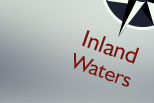



| Home > Browse Selected Topics > Shipwreck Investigations | Français | |
This archived Web page remains online for reference, research or recordkeeping purposes. This page will not be altered or updated. Web pages that are archived on the Internet are not subject to the Government of Canada Web Standards. As per the Communications Policy of the Government of Canada, you can request alternate formats of this page on the Contact Us page.
The Pacific Coast "Carte de la côte Nord Ouest de l'Amerique septentrionale depuis la Presqu'isle Aliaska jusqu'a l'entrée de Nootka d'apres les decouvertes des Russes en 1784 et de Portlok et Dixon en 17869 et 87" ca. 1788 Canada's Pacific Coast comprises the waters of the western seaboard from the Juan de Fuca Straight in the south, to Alaska in the north. Shipping for northern Canada follows a route through the Alaskan Panhandle. The area is marked by deep waters with strong currents, rocky cliff faces and the narrow fjords created during the glacial retreat of the last ice age. In the south, these features can play havoc as tides rush through the straits around Vancouver Island, bringing ships disastrously close to the steep and rocky shore. In the north, the prevailing winds present a serious challenge as they bottleneck in the Lynn Canal and produce ferocious gales that can see ships deposited onto reefs. When the tide recedes, these ships are left stranded and damaged, and are often sunk when the water returns.
The development of advanced navigational tools, such as global positioning systems, has meant that the number of shipwrecks on the Pacific Coast has declined dramatically, though strong currents and winds still pose a serious risk. ReferencesThe Atlas of Canada -- British Columbia. Natural Resources Canada. Graveyard of the Pacific: The Shipwrecks of Vancouver Island. Virtual Museum of Canada. O'Keefe, Betty, and Ian Macdonald. The Final Voyage of the Princess Sophia. Toronto: Heritage House Publishing Company Ltd., 1998. |